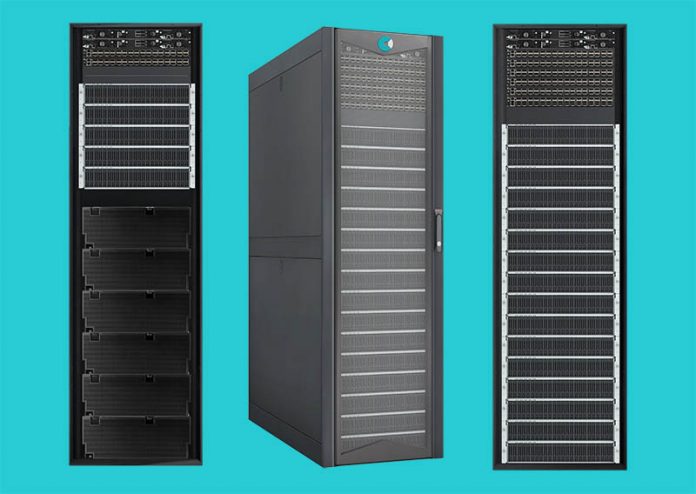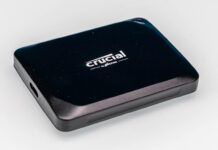When HPE Completed its Cray Acquisition they acquired not just the leading exascale supercomputer company. HPE also now has the leading exascale storage company. The company’s new Cray ClusterStor E1000 series boasts wins for the US Department of Energy’s first three exascale supercomputers Aurora, Frontier, and El Capitan. Those three systems are also joined by the NERSC Pearlmutter supercomputer that will use the Cray ClusterStor E1000 all-flash array for 30PB of primary storage.
Cray ClusterStor E1000 Overview
Cray claims that the ClusterStor E1000 series can hit up to 1.6TB/s of throughput and over 50 million IOPS per rack. The Aurora, Frontier and El Capitan systems will combine to put around 1.3 Exabytes of data onto ClusterStor E1000 storage between the three systems.
There are two flavors of the ClusterStor E1000. First, one can have an all-flash array for fast parallel file system access where speed is the most important metric. Second, one can have a hard-drive-based solution with flash integrated into hard drive pools. Cray’s software intelligently moves data to the tier appropriate for the performance and capacity needed.
One of the unique features of ClusterStor E1000 is that it will be based on PCIe Gen4 instead of PCIe Gen3. If you look at the Dell EMC PowerMax and HPE Primera, those company’s high-end enterprise products, they are still stuck with PCIe Gen3 as they are built on Intel Xeon Scalable and do not have access to PCIe Gen4. Since ClusterStor E1000 is built with PCIe Gen4 controllers, and it is shipping in Q1 2020, it will be shipped before Intel launches its Ice Lake Xeon family finally joining the PCIe Gen4 game in the second half of 2020.
The Impact
This is a big deal. First, we now have Cray Shasta, Slingshot, and now ClusterStor E1000 as a re-architecting of the company’s portfolio. It is also a major endorsement to the Cray ecosystem that the US DoE is building its three largest systems to date using their portfolio including the E1000. For any organization looking to build out HPC clusters, this kind of endorsement means that the E1000 will likely need to be on the storage list beyond players like DDN who are focused primarily on storage.




